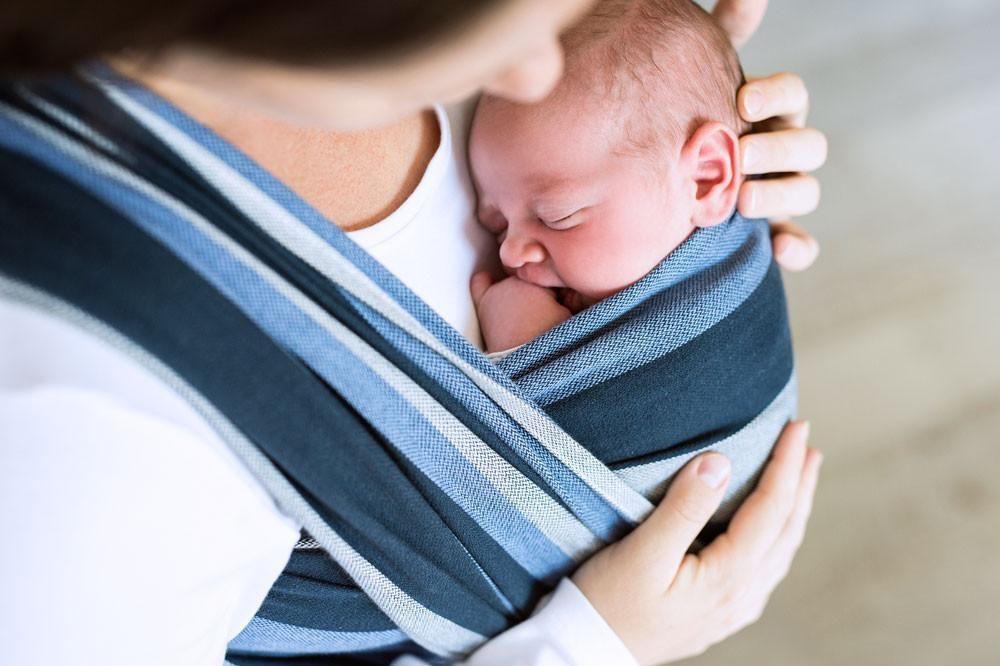BABY
How to Use a Baby Sling Safely
Tips for wearing a sling, baby carrier or baby wrap.

Written by
Dr. Harvey Karp

SHARE THIS ARTICLE
PARENT PICKS
Bestsellers
BABY

Written by
Dr. Harvey Karp

SHARE THIS ARTICLE
Bestsellers
Baby slings and baby carriers offer us a delicious closeness with our little bugs, and they leave our hands free for other jobs. Babies, of course, adore being enveloped in the rich presence of our warmth, scent, movement, touch and sound! And, a 1986 Canadian study found that carrying babies for 3 hours a day (in parents’ arms or a sling) reduced fussing by 43%!
Though baby slings can be beneficial—for both Baby and Mom and Dad—it’s important that you wear your sling the right way, because if worn incorrectly, slings could pose safety hazards. Follow the baby sling safety tips below, to carry your newborn safely.
Newborn baby slings are a great way to carry your baby and keep your little lovebug close. With the added benefit that baby slings reducing fussiness, what’s not to love? But if you’re finding that your baby only wants to sleep in the sling (or in your arms), consider buying a SNOO. SNOO is the only baby bed that recreates the cozy surroundings, sounds, and motions of the womb to automatically calm crying (often in less than a minute!).
Disclaimer: The information on our site is NOT medical advice for any specific person or condition. It is only meant as general information. If you have any medical questions and concerns about your child or yourself, please contact your health provider. Breastmilk is the best source of nutrition for babies. It is important that, in preparation for and during breastfeeding, mothers eat a healthy, balanced diet. Combined breast- and bottle-feeding in the first weeks of life may reduce the supply of a mother's breastmilk and reversing the decision not to breastfeed is difficult. If you do decide to use infant formula, you should follow instructions carefully.